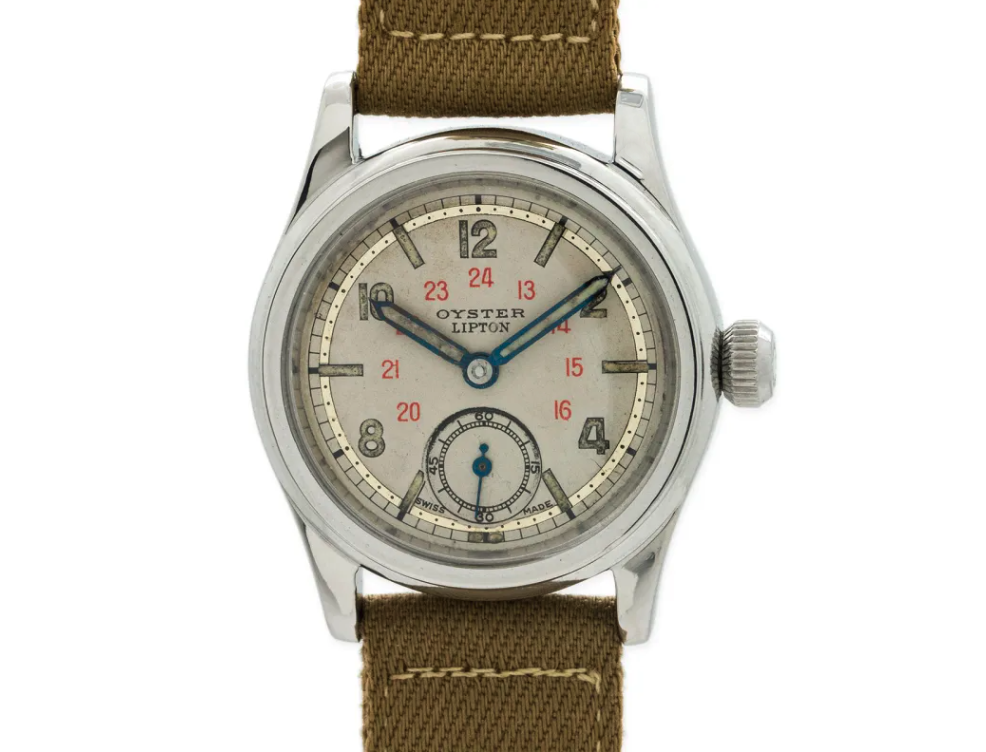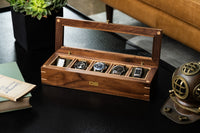You may be familiar with the famed Rolex ‘Mil-Sub’ watches, the military-issued Submariners that were used by British and other forces from the 1950s through today. However, these special Submariners weren’t the first military-issued Rolex timepieces. During the Second World War, the company produced watches that found their way into the hands of Allied servicemen. Though not strictly “issued” watches, their provenance is just as interesting as that of their later purpose-built- for-frogmen cousins.
While some references of these timepieces are extremely rare, others will surface from time to time, and if you know what to look for, you may just stumble across a bargain: 34mm “Air” watches, for example (see below) occasionally make their way onto the market for a few thousand dollars, and are often ignored in favor of larger pieces due to their smaller case sizes. Keep your eyes peeled, and always check back in to peruse our inventory on analogshift.com!
The Reference 3525 ‘Monobloco’

A Rolex Reference 3525 Oyster Chronograph bought by Corporal Clive Nutting while a Prisoner of War in Stalag Luft III ( Image by Christie's )
This watch holds the distinction of being one of Rolex’s first Oyster-cased chronographs. Powered by the hand-wound Valjoux 23 movement and measuring 35mm in diameter, it was produced in several casing materials between 1939 and 1945/46 and featured a dual-register chronograph layout with concentric telemeter and tachymeter scales. Rather famously, British POWs held in German camps were able to write to Rolex to request a watch, payment for which was not required until after the war. The Ref. 3525 was one such available model, and was used in the breakout from Stalag Luft III in 1944, which was later featured in the Steve McQueen film The Great Escape (1963).
The Air King/Air Tiger/Air Lion/Air Giant

Rolex Oyster Air-King circa 1945 - ( Image by FIVE:45 )
Technically, this series of watches was a bit late for use during the War — the earliest weren’t produced until roughly 1945 — but they’re intrinsically tied to the history of the conflict. Supposedly, RAF pilots had been buying Rolex watches to replace their own issued timepieces, as they found them less reliable. In honor of these intrepid pilots who fought the Battle of Britain, Rolex founder Hans Wilsdorf decided to name several watch lines after them, resulting in the Air King, Air Tiger, Air Lion, and Air Giant. Numerous case shapes — including both cushion and round designs — were used, as were different case metals and dial combinations. The Air King is the only model still part of the modern Rolex catalog.
The Oyster

Rolex Oyster Lipton - (Image by - WANNA BUY A WATCH)
Various Oyster-cased models were sold throughout Commonwealth countries and were purchased by individual soldiers who wore and used them during the War. These were often sold by local retailers — such as Birks and Eaton’s in Canada — and were sometimes double-signed with said retailer’s signature on the dial. Look out for the Oyster Lipton, Oyster Commander, Oyster Shipmate, and more, and keep in mind that the Solar Aqua and King of Wings (which were sold by Eaton’s) weren’t signed “Rolex” or “Oyster” on the dial at all. Most of these watches used ébauches (movement blanks) produced by Fontmelon, which were then modified by Rolex.
Pocket Watches

Rolex WW2 Military Pocket Watch - (Image by Vintage & Prestige)
Two types of issued pocket watches were produced by Rolex during the War years using ébauches from Cortebert: One featured a black luminous dial, while the other featured a white dial. The former was given the “General Service Mark II” designation by the British Army and features an issue number with the prefix “A” on the case back. The white dial version was intended for use in an instrument panel or a wooden case and given a “B” prefix — it was intended as a backup chronometer.












